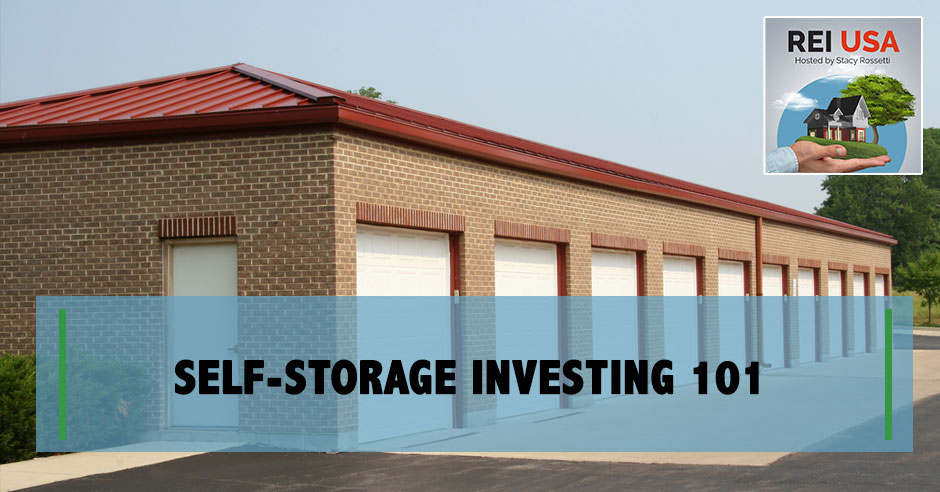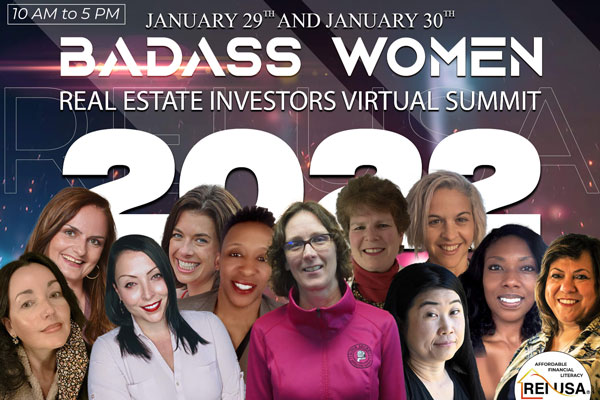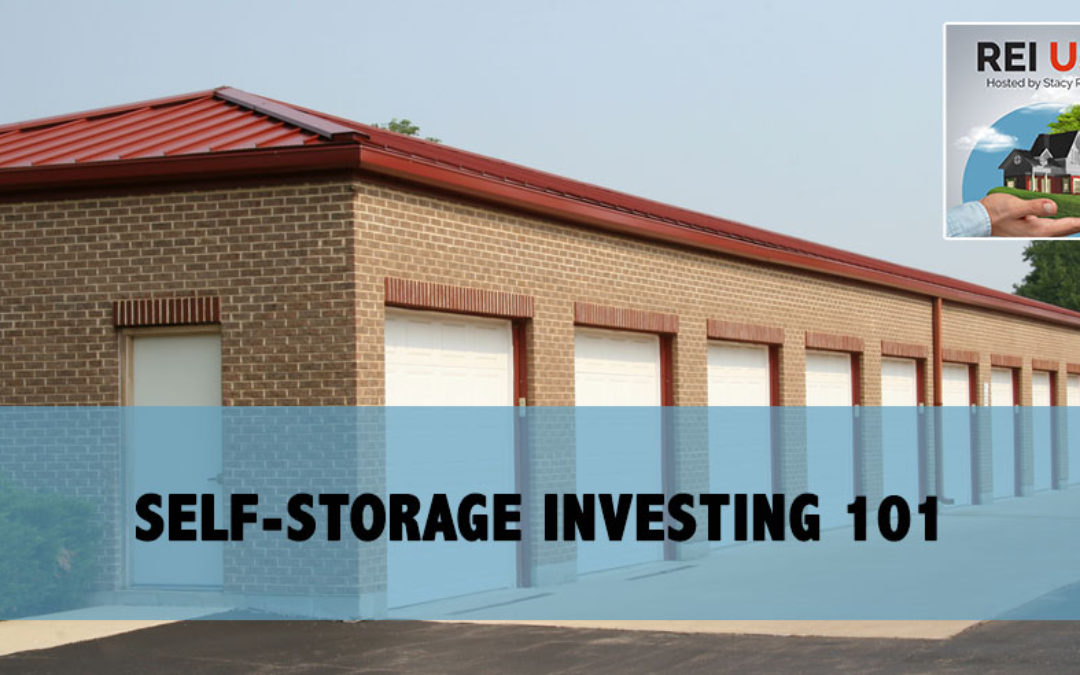
What do you need to know to get started in self-storage investing? Join in as Host Stacy Rossetti walks you through practical, basic strategies to succeed. For one, you need to give yourself as much time to close the deal. Why? Because you need it for proper due diligence. Remember to learn and follow your state’s auction process and tenant laws. Help your potential seller understand how the process works. Don’t allow sob stories to convince you to change the rules. Training your tenant is vital for building successful relationships. Listen to this episode to learn much-needed self-storage investing tips.
—
Watch the episode here
Listen to the podcast here
Self-Storage Investing 101
In this episode, we are going to go over some challenges of self-storage investing. In all of the real estate investing, everybody always tries to make it totally awesome like, “This is the best niche ever.” The truth of the matter is that unless you do the work, it is not going to work. Here are some of the things that you are going to have to focus on if you want to get into self-storage investing. The first thing is that you have to find motivated sellers. Self-storage owners are the least motivated owners of all in the industry. There is no reason for anybody to sell if their property is running and making money because it is very little work to run a facility.
In fact, I have a student now that works at a facility. It is a 475-unit facility and he says that he is bored all the time. He says, “The first week of the month is a little crazy because that is where everybody is making their payments. After that, the next couple of weeks is very boring.” We did not hire a full-time person to help us until after we had 600 units.
Think about it this way, that 600 units or less, which is a huge facility or several facilities, you can manage it on a couple of hours a week. That is why self-storage owners are the least motivated owners out there because, for the amount of work that you put into it and the money that you make, there is no reason to sell.
Motivated sellers in the self-storage investing world would be mismanaged properties. They cannot figure out how to manage them properly, or they are older and are over it or maybe there is some issue that came up and they cannot do it anymore. Finding those motivated sellers is the key but it depends on what you are interested in. Do you want to talk to motivated sellers or unmotivated sellers? We will get into that.
Creative Deal Structuring
The next thing is closing the deal because commercial real estate investing is completely different than residential investing. It takes months to close a deal unless you have the cash to close the deal but most people do not have hundreds of thousands of dollars to close deals or more. Commercial real estate is expensive. A lot of people have this thing in their mind, “How do I even afford a storage facility because it is expensive?” The truth of the matter is it is so you have got to learn how to do what we call creative deal structuring or you have to learn how to raise lots of money.

Self Storage Investing: You want to have as much time to close because you need it for due diligence.
Closing the deal on the commercial side is rather hard because it does take anywhere from 90 to 120 days to close a property. You want to have as much time as you can to close because you want to have that due diligence time. Doing due diligence on a storage facility or doing due diligence on a commercial property takes a little bit longer. Typically, our due diligence periods are around 30 days, if not 60 days. I’m asking for 60 days of due diligence and closing in 120 days. These are not properties that you are closing every couple of weeks. You close a couple of these a year at most.
When you are talking to owners, you need to be able to make several offers at one time. Going and making a cash offer does not work anymore on the commercial side. You need to make several offers and be able to do that. Learning how to make lots of different types of offers is key in the commercial real estate investing world. Doing all this from home is what you want in the storage investing world. You should be able to manage everything that you have all from the comfort of your home but you have to learn how to set that up. When you think about storage investing it is, find, fund, run them. That is the three-step process.
Running them is the most important part because when you buy a storage facility, you are actually buying a commercial property, a retail property, and you are only going to make money if you run that thing properly. If you do not run it properly, then you are not treating it as a business. Commercial real estate in self-storage investing is all about running a business, P&L, balance sheet, your rent roll, profit, loss, and expenses. How do you increase your income and decrease your expenses? Running a business is what it is. Those are the challenges.
We are going to talk about some of the mistakes that people make, the challenges of finding properties, how to virtually find your facilities, and why focusing on passive income is the single most important thing that you should be doing now. Why invest in self-storage? During the COVID period here in the last couple of years, you can see on the commercial real estate side which types of industries are struggling and which ones are doing very well. There was only a 16% drop in self-storage. Cell towers, data centers, and self-storage are still doing well.
In fact, during COVID, we had no change at all in what happened in our facilities. We had a couple of people that could not pay or did not want to pay but the truth is that pretty much everybody is going to come up with $50, $100 or $150. They do not want to come up with $1,000 or $2,000. That was the issue. Instead of paying their rent or mortgage, they were paying all their smaller bills, and then not paying that bill. That is the truth about what happened during COVID.
Another thing I wanted to point out is Marcus & Millichap, which is a brokerage but they also do a lot of data and look at numbers in the commercial world. They said that interest rates are at an all-time low. Real estate investment investors have a significant acquisition and refinance opportunity. We know that. Real estate is a long-term investment that is particularly well-positioned to withstand financial market turbulence. I like to keep my eye on Marcus & Millichap and see what they are saying because they do a lot of stuff in the commercial space.
[bctt tweet=”Real estate is a well-positioned long-term investment to withstand financial market turbulence.”]
While the Marcus & Millichap forecasts commercial real estate to remain stable from major economic disruption, its outlook for self-storage is particularly positive. Space demand for self-storage units will experience little if any impact on the Coronavirus. The national average vacancy rate in 2019 is at 9.9% and is expected to drift up to 10% in 2020 as the elevated flows of new facilities continue to tap. It keeps getting bigger and bigger, honestly. The numbers for 2021 have not come out but I’m assuming they are going to be even higher than that.
What is happening is that the self-storage investing world is growing very fast and there are a lot of opportunities. You can check all this out by going to InsideSelfStorage.com. It is the nationwide association for storage investors. They have a Coronavirus page as well. We can keep tags on what is happening in the industry.
The steel prices have gone up but people are still building because there is so much demand that the numbers work out. The steel prices are making it even more economic, which is different from residential because new construction is very expensive now to build. The prices are going up higher on the houses.
Commercial Real Estate Is All Based On Income
One thing I love about commercial real estate investing too is that it is all based on income. When you do comps on a commercial real estate property, you are not doing comps the way that you do in residential. You are looking at the income. The value of the property is based on the income of the property, and then you have to learn how to look at those numbers. If it is making $100,000 a year, what is it valued at? That is what all lenders look at.
Even dumpy properties that are not as beautiful as the other ones, for instance, I had a storage facility that I bought. It was an abandoned storage facility. The owners completely abandoned it and it is 76 units. I picked it up for $150,000. It is worth $550,000 now because it is making about $5,000 a month. I’m going to be making around $350,000 to $400,000 on this facility. I have only owned it for a year. That is because the value of that property is based on the income of that property. We will learn about that as we go through it.

Self Storage Investing: Reach out to the entire state and talk to every owner out there.
How do we weather the storm? Characteristics of investors and how they get through this. I talked about this last time but I always want to bring this up. You have to act early. We all know that something is going to happen in the next couple of years. We don’t know what. Maybe it’s a 20% decrease in prices in residential property or the stock market crashes. We have no idea what is going to happen. You should be preparing now for what is going to happen. Something is going to happen because it’s historical. There are upswings and downswings, and you want to be ready when the downswing comes.
You also want to look at your long-term perspectives. You want to make sure that you are always keeping an eye on what the market calls for and what it is looking like. I try to educate myself regularly on other people’s perspectives, whether or not I believe them, I want to know what everybody is thinking so then I can formulate my own opinions. Another thing is that we focus on growth, especially in the self-storage investing world. How can we keep moving forward? How can we make sure that we are growing? How can we run our business better? How can we make more money? How can we decrease our expenses?
We are going to talk about finding the right market, properties, wholesaling, creating an LLC, and getting ahold of an owner but before we do that, let’s have some fun. Tell me what you think is the answer to this. How many storage facilities are there in the United States? There are around 50,000 storage facilities in the country. There are more than five times members at Starbucks.
There are 1,000 storage facilities per state on average. Thirty percent of those facilities are owned by REITs. That is like a hedge fund. REITs are the big names like CubeSmart, Public Storage, Life Storage, and U-Haul. These are all big funds, REITs or investment trusts. What that means is that out of those 1,000 in each state, California will have more than Delaware but out of 1,000, 300 of them are owned by REITs. That means only 700 storage facilities are owned by mom-and-pop owners just like me. Out of those, I’m assuming it is the 80/20 Rule. Eighty percent of them have more than one facility and 20% have one facility.
Some of them have 1 or 2 facilities, and then you will have less and less, we will have more and more facilities. Let’s say half of those are regular people. Out of 700, 350 to 400 of them, you can contact and see if they will sell their facility because you want to go directly to the owner to get your facility. There are only 400, maybe 500 owners in the entire state. That’s it. On the residential side, you can buy 10,000 names and still never have a little dip in the industry. There are only 500 names that you can contact in your state.
Reach Out To The Entire State
People are thinking, “I want to buy something that is near my area.” If you buy something that is within an hour of where you live, there might be only 20, 30 or 40 facilities that you can contact. It gives you a very minimal chance of finding something that you want to buy, so you want to reach out to the entire state and talk to every single owner out there. Just to give you a perspective of how small this industry is, there are only 25,000 people in this industry that invest. There are a lot of people that want to invest. Everybody wants to get in self-storage. The ones that actually do it are half of this number. It is a very small community which I love.
[bctt tweet=”You need to prepare and be ready for when the downswing comes.”]
What is the average number of items in an American Home? An average home has 300,000 pieces of items. The snapshot would be that the industry is a $39 billion industry. There are anywhere from 45,000 to 60,000 facilities nationwide. The total rentable self-storage space is 1.7 billion square feet. There are 5.4 square feet per person, which is a very important number.
We have to be under 8% to invest in an area. In the storage investing world, you are looking at square feet per capita and you want to be under 8%. The percentage of households that rent a self-storage unit is 9.4%. The average monthly cost for a self-storage unit is $87.89. That’s pretty good. Typically $88 a person when you rent.
The facility that I was telling you about is the one that we picked up for $150,000. It was an abandoned facility and we have leased it up for a year. We’ve got that thing up and running, and we are making around $5,000 a month. Our expenses are 30% of that. Typically, you are around 30%, just calculate that and that is our net. That’s not a lot.
If you want to learn how to invest in self-storage, you are in the right place. We are all here. All the teachers are here to help you and I appreciate you being here. We are going to go through all of the departments, the office admin, marketing, finance, acquisitions, management, and liquidation. In your office admin, here are the first steps that you need to be focusing on.
You need to set up your phone so that you can call and talk to owners, and you can get phone calls eventually from your tenant. You need to have a business line essentially to make calls. You need to go electronic, meaning that you need to be able to look up all your properties, manage your properties, and manage your company from your phone.

Self Storage Investing: You need to set up your business line so you can call, talk to owners, and receive phone calls from your tenant.
You need to be electronic because that is going to be the first step for you, in the long run, to be managing your storage facilities virtually. You want to be virtual. You don’t want to be one of these guys that gets up every day, and goes and hangs out at their storage facility. You want to be able to manage your facilities from your phone.
Let’s start going electronic and getting in the habit of doing that. Also, Google Drive, we utilize that for our team. We are talking to each other through Google Drive and that is how we manage our folders, so make sure you are using something like that. It doesn’t have to be Google Drive but you want to be cloud-based.
Build Your Team
What I’m saying when I say go electronic and go Google Drive is you want to be cloud-based to manage everything. Our property management software is also cloud-based and we can manage that right from our phone. We can be anywhere in the world as long as our phone works, and we can manage everything. Set up your LLC. You want to have an LLC because it is a buy and hold. Make sure that you have this LLC set up and also, you want to start building your team up, and that is including people that are going to help you find properties.
If it is not going to be you, who is it going to be? It is going to be realtors. You want to start trying to figure out how you are going to set everything up. For instance, the people that are going to be the ones that are going to be managing your facilities. The way our team looks is we have set our facilities up so that we find, fund, and run them. In the very beginning, I did everything myself. I found, funded, and run them. That was the very first facility that we had, which was about 150 units, the second facility we picked up as well, too.
We had around 200 to 250 units before we added on Bonnie, who is our Office Manager. She started part-time working for me. She helped to answer the phones and manage both of the storage facilities that we had, so around 250 units, we hired Bonnie. My job was to find and fund them. Her job was to run-them part. As we grew to 6 facilities which were 700 units, she went full-time and managed the facilities. My husband sold his home inspection company. He came in and started managing the facilities together with Bonnie.
Bonnie and my husband, Pete, managed the facilities. My husband was the boots-on-the-ground person that went out and managed everything if we needed to overlock or anything like that. Bonnie was the office person. I still found and funded them, and then eventually, I hired Chris. Chris is our acquisitions person. His job is to find storage facilities for us. We bought 6 in 2021, so we are up to 12. We are in the process of buying four more. He is doing really good at finding storage facilities.
[bctt tweet=”Build your team up that includes people who will help you find properties.”]
He finds them, I fund them. My job is raising money. I told you the most important thing is to raise the money. My husband, Pete, along with Bonnie, then we also have now Patrick and Darryl. That is it. It is Chris, me, and then Pete’s team to manage the storage facilities. We have 1,200 or 1,300 doors. We typically buy storage facilities that are around 100 to 150 units. Up until now, we have stuck with facilities that are $600,000 or less but of all the facilities that we are going to buy now are $1 million-plus.
All we are doing is selling one facility, and then we are going to 1031 exchange it for a bigger facility. We are about to launch a fund. We are going to raise $10 million and raise that money so that we can buy more facilities. We started with facilities that were $150,000 to $250,000. Now we are up to $1 million properties. We have only been doing this for a few years. That is how our team has been built over the last couple of years, just to give you a perspective of what it would look like.
Now we are in the marketing department. You need to pick a market and figure out where you want to focus. You want to get out there and talk to owners and drive for storage. The best way to define properties is to drive for storage and talk to owners. Now, if you can’t drive for storage, you can’t find time to do that. Most people don’t do this. I do this because that is my personality. I want to go talk to the owners and look. I will say, driving for storage equals market research.
If you are randomly calling owners and trying to figure out what you want to do, then it does not help you get an overall perspective of what the market looks like, so you want to get out there and drive. You want to be in secondary and tertiary markets. Primary markets are oversaturated. When you see CubeSmarts, U-Hauls, Life Storage, and Easy Storage, that is all primary market. You do not want to be in those markets because the cap rates are super low and the prices are going to be more expensive. There is more competition.
You want to be in secondary and tertiary markets. We are in Georgia, so we are buying a facility now in Augusta. Augusta is 200,000 people. It is not a small town but it is considered a secondary market because it is a city in the middle of Georgia. It is not attached to anything else, so you want to look for secondary market cities like that or you can go tertiary. We also buy in the tertiary markets, which is the country like the smaller towns, cities, and stuff because there is storage everywhere.

Self Storage Investing: Banks have around 4% to 5% interest rates, while private lenders have 8-12%.
It depends on your price range. You are going to have more expensive facilities in primary markets, middle-type facilities in secondary markets, and cheaper facilities in tertiary markets. Another thing that we do is we go onto Google Maps and we look for a facility. You can go onto Google Maps and then search, “Storage near me.” When you search that, you will find all the storage facilities in your area. If you are in a primary market, then you do not want to be looking in this area but if you pick an area outside of the primary market and you start looking and seeing what facilities are there, you may be able to come across something that is a good buy.
You want to look on Google Maps and make sure that all the information is filled out. If it is not filled out, then that is considered a lead. If it is missing a website, phone number, address or it is some weird-looking facility that is all dumpy looking, then we consider that a lead. I will try to either go out and talk to the owner or call the owner to get ahold of them as well. You can also use Google Maps to find facilities.
Go To A Bank To Raise Money
Again, I said you want to find motivated sellers. The storage owners are unmotivated. Motivated would be if there is some issue or they are not managing it properly. In the industry world, there are mismanaged properties and income-producing properties. Mismanaged are dumpy storage facilities or facilities that are not making any money. If they are not making any money or if they are less than 75% full, they are considered a mismanaged facility. A bank will not lend to them, so you have to raise money to buy these things.
A bank will lend to income-producing property. Income-producing properties are exactly what it is. They will be able to give you a P&L, a balance sheet, all the numbers and show you how they have been running their facility because a bank is going to require that. To get the lowest interest rate, you always want to go to a bank. Banks are typically around 4% to 5% interest rates, whereas private lenders are going to be 8%, 9%, 10%, 11% or 12% interest.
Now that you have an idea between mismanaged and income-producing property, you can start thinking about, “Which kind of facilities appealed to me the most?” When you get out and start talking to owners, you are not going to know if it is a mismanaged facility or an income-producing property. We have facilities that are not dumpy-looking but they are not the most beautiful storage facilities in the world and they are all income-producing properties. We will be able to show our P&L and balance sheet when we sell these things and make sure that we can get them for top dollar even though they are not the best of the best, most beautiful storage facilities.
In commercial real estate, it depends on if it is a primary, secondary or tertiary market. You need to know what the cap rate is for each of those. It depends on whether or not it is an income-producing property or a mismanaged property. Depending on those situations is how you are going to run your numbers. What I love about storage is that your marketing budget is almost none. My marketing budget is time and effort. That is what it is.
[bctt tweet=”Pick a market and figure out where you want to focus.”]
Chris, our acquisitions person, all he does to find the facilities, and he has gotten nine under contract previously is the drive for storage and use Google Maps to find facilities. That is exactly what he does. The one thing I love about the commercial side is buying lists, sending out letters, and doing all the stuff that you are doing. On the residential side that costs so much money, we do not have that. On the commercial side, it is more time and effort. It is all about know, like, and trust. The owners need to know, like, and trust you. If they do, then they are going to sell you their property. If they do not, then they are going to be like, “I don’t want to sell because I’m going to give it to my son.”
The next department is your acquisitions department. This is where you are going to learn how to run commercial deal analysis. Commercial deal analysis is completely different from residential. You need to learn what cap rate, cash-on-cash return, and yield are. In the storage investing world, you need to understand what the purchase price is, the vacancy rate of the property, the expenses are going to be for that property, and the total income is going to be. Plus, what is the competition going to charge, and what’s your total square footage on your unit is.
When you start looking at all those numbers and how the whole picture comes together, that is how you run commercial deal analysis. It is talking to the seller and gathering all the information from him that you need so that you can run the deal analysis. When you run the deal analysis, you look at not only the numbers that they give you but also what the competition charge and the opportunity of that facility is.
The opportunity could be that you are increasing the rates or that you could add new units. That is the two opportunities but sometimes there are opportunities like adding a sign or cell tower. There are a lot of storage facilities that have cell towers and signs on them. The opportunity is increasing the rates and adding new units.
When you look at all that, you have to look at the overall picture of what the facility looks like, which is your as-is now, what is it worth versus your value-add worth. When you look at that, you come up with the value of your property. That is acquisition. It is learning how to run the deal analysis, and then getting all of the information that you possibly can to run that analysis.

Self Storage Investing: The owners need to know and trust you.
On a mismanaged facility, they may not have that. Now, I have a facility under contract for $1 million and the owner is telling me that he is making $150,000 a year. If you think about that, if he is making $150,000 a year and he is selling it for $1 million, you would think in your mind that that is an income-producing property but the truth is he has only been taking cash for the last few years. He does not take anything but cash. He has no tax returns, no P&L or balance sheet. He has nothing. In fact, I asked him for his balance sheet and he said, “What is a balance sheet? I have no idea what that is?”
Even though he is making $150,000 a year, it is considered a mismanaged property because you cannot take it to a bank and get it financed. “How do you buy a property like that?” That is the question. That is where you have to learn how to raise money. You have to learn how to do creative deal structuring. You have to talk to private money lenders, hard money lenders or commercial lenders. You talk to everybody that you possibly can to try to figure out how to finance deals like that.
It is easy to go out and get a loan for $300,000 or $400,000. How do you get a loan for $1 million on a property that has no proof of the income it is making? That is where raising money comes in. On the commercial real estate side, you must learn how to raise money. If you do not learn how to raise money, you are going to become overextended, and then a bank is not going to want to work with you more than one time.
It is learning how to do creative deal structuring. Creative deal structuring means either getting the owner to owner finance it to you or doing an equity partner structure. We do a lot of equity partners. A deal like this $1 million facility that is making $150,000, I’m in the process of talking to several people and creating a company to buy this thing, and then we will partner together.
Another thing that I could do is I could put this into my fund. The fund that I’m about to launch is the perfect deal to go right into the fund. I could crowd-fund that money and buy it. There are a lot of different ways. You have to learn how to do them. It sounds a little bit complicated but it is just like learning anything else. You have to educate yourself on how to do all these different structures.
Buying A Storage Facility Management
Finally, management. Management is the most important part of buying a storage facility. Management is how do you actually run this business so that it is truly passive income? In all of the facilities that I buy, the owners get up every day and manage their facilities. They would go there and meet the tenants. This is their life and job. They are the one facility that they manage all their lives but this is not how we do it. We want to learn how to scale up, grow, be totally hands-off, delegate everything and not be there every single day, telling people what to do.

Self Storage Investing: Learn and follow the auction process and tenant laws of your state.
That was one of the main reasons why I decided to go to move into an RV because we needed to be away from our facilities so that we could learn how to manage them passively. The way that you do that is you train your tenants. You are the one that puts their foot down. You can’t let them take advantage of you.
You can’t let them give their sob stories about anything, “These are our rules and this is how we follow it. If you don’t like it, then you are not the tenant for us. We are running a business and this is how we run our business.” That is what I call training your tenants. I also do what is called rip the band-aid. As soon as we buy that facility, if they are not charging what they are supposed to be charging, we rip the band-aid and increase those prices. Everybody complains about it because nobody leaves. You have to go through the whole process of listening to all of them complaining.
We’ve got 350 units. We doubled the prices on every single one. Out of 350 units, 8 people moved out. We are all electronic and completely contactless. You have to understand your Auction Laws and how to do this. This is actually a whole process that your state creates that you have to follow. I bought a facility once where they made their own rules. They were like, “We can do this. We can open your door, we can get anything out and move your stuff out if we want.” You cannot do that unless you go through the auction process.
Learn your auction process and learn the Tenant Laws of your state because these are very important. You want to make sure that you follow those. You want to learn how to scale up. That is the next step. How do I buy other properties? After I get this one stabilized, how can I get out and look at other properties? That is the management side. I teach self-storage on the first Tuesday of every month. I do the Beginner Investors session on the third Tuesday of every month. That is Self-Storage 101 in a nutshell.
Important Links
- Marcus & Millichap
- InsideSelfStorage.com
- Coronavirus page
- https://www.REI-USA.com/stacy-rossetti
- REI USA
- http://www.rei-usa.com/membership/
- http://www.REI-USA.com/trainings/
- http://www.REI-USA.com/ teachers-spotlight/
- http://www.rei-usa.com/free-template/
- https://www.instagram.com/reiusa_/
- Free Online Jumpstart Course for Real Estate Investing: https://bit.ly/3IrDji9
- REI USA Youtube: https://bit.ly/36QPoQl
- How to Get Started Investing in Real Estate: https://bit.ly/3pIxB4r
- Talk to Kristi, Our Community Manager, for a FREE 10 Minute Website Demo: https://bit.ly/3pIxB4r
About Stacy Rossetti
 Real Estate Investing – My Journey, My Career My Life
Real Estate Investing – My Journey, My Career My Life
As a real estate investing expert and coach, I have built my name on the results I have created – for myself and for my students.
Investing in real estate has changed my life, opening doors for me and my family and affording me an outlet for all my creative and entrepreneurial energy. Through scaling up a renovation company in Atlanta with hundreds of transactions to learning to invest passively through creative financing deals and storage facilities, I have not only overcome many trials and tribulations, but systematized and organized my days so that I can run several successful businesses.
Day after day, I work hard at what I do, striving to stay ahead of the curve by building on my knowledge and making shrewd decisions. This did not happen overnight, of course. My early days in real estate were slow, exhausting and hard, but little by little, I earned a sense of what worked and what I needed to do to achieve consistent results. Because I taught myself all this learning through experience and mentors, the process was gradual and required the utmost diligence on my part.
Today, I own and operate REI USA and StorageNerds. REI USA is an online education and networking platform that is exactly the tool that I would have wanted when I was getting my start, something that aspiring and established investors can turn to, a means to cutting your learning curve dramatically.
Together my husband Pete and I currently own and operate eight storage facilities. Investing in self-storage is our passion and how we have decided to build wealth. It is the best kept secret in the investing world and I don’t know why more are not investing in it.
In addition to investing in real estate myself, I have since discovered another passion in my life – coaching and empowering others. Whenever I see that I have guided someone toward a breakthrough or helped them to transform themselves professionally, I feel deep fulfillment, confident that I am on the right path and reinvigorated to go out and do even more.
As a coach and teacher, I specialize in helping my students navigate real estate investing, rehabbing, and storage facilities. These are all complex, involved topics, but I have honed my ability to communicate the intricacies – and found ways to demystify them efficiently. Seeing the light go off in my students’ eyes, I know that the magic is happening, and in everyone I teach, I recognize myself – wide-eyed, hopeful, firmly believing in all the opportunities that real estate investing can present. For years, I have connected with my students through workshops, offering a glimpse into the thought processes and techniques that have led to my success.
In order to share my knowledge with as large an audience as possible, I have currently expanding beyond person-to-person coaching, developing a Self-Storage Investing mastermind and group coaching mentorship called StorageNerds. This mastermind draw on my years of experience in real estate and self-storage investing and break down my ideas and strategies in a way that even beginners can digest.
My passion is to help beginner investors learn to invest in real estate and my mission is Affordable Financial Literacy. REI USA embodies this mission by engaging those that truly want to learn to invest in real estate but don’t want to go broke doing it.
Over the course of the last five years my husband and I have spent many years perfecting how we find, fund and run our storage facilities so we can be anywhere in the world. Our facilities are truly passive income and we love sharing our tips and tricks on how we manage them through our StorageNerds mastermind.
Renovating my first home in 2012, I knew that I had stumbled upon something big – a calling, a vocation, a passion. There was no doubt in my mind that I was going to stick with real estate and give it everything that I had. Collaborating with my husband has been a bonus, and I am grateful every day for the career that he and I have created together.

